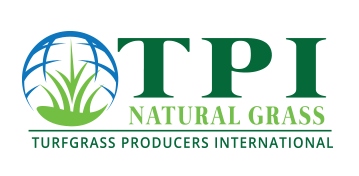Preparing your soil for new sod.
There is no better time to enhance lawn's ultimate beauty and success than by improving the soil before any planting takes place.
Benefits of Proper and Complete Soil Preparation
Why Is Good Soil Prep Important? Soil preparation is a very important step in sod installation. It needs to be well drained and ideally, you should have clean topsoil tilled to a depth of 4-6”, leveled and smooth (the smoother the better). Although most new homes in our area don’t come with good topsoil, a workable soil free of large rocks (2-3” and up) will do. If your yard consists of clay and rocks, it is a good idea to cover your yard with a minimum of 3” of topsoil. After your yard is graded and just before you lay the sod, it is beneficial to apply a starter fertilizer. Apply the fertilizer following the manufacturer’s directions just before you lay the sod.
You can also test the soil pH to determine if any pH correction materials are required. Acidic soils (pH of 6 and below) can be improved with the addition of lime. The type (or source) and total amount of applied lime will be determined by the level of acidity and should be based on the recommendations of a reliable garden center or turf professional. Alkaline soils (pH of 7.5 and higher) can be improved with the addition of sulfur or gypsum. As with acidic soil correction materials, the type and total amount of materials will be determined by the level of alkalinity and should be based on professional recommendations.
Benefits of Proper and Complete Soil Preparation
- Improved Uniformity
- Increased Density
- Faster recovery from wear
- Reduced Use of water, fertilizer, & chemicals
- Reduced Maintenance
Why Is Good Soil Prep Important? Soil preparation is a very important step in sod installation. It needs to be well drained and ideally, you should have clean topsoil tilled to a depth of 4-6”, leveled and smooth (the smoother the better). Although most new homes in our area don’t come with good topsoil, a workable soil free of large rocks (2-3” and up) will do. If your yard consists of clay and rocks, it is a good idea to cover your yard with a minimum of 3” of topsoil. After your yard is graded and just before you lay the sod, it is beneficial to apply a starter fertilizer. Apply the fertilizer following the manufacturer’s directions just before you lay the sod.
You can also test the soil pH to determine if any pH correction materials are required. Acidic soils (pH of 6 and below) can be improved with the addition of lime. The type (or source) and total amount of applied lime will be determined by the level of acidity and should be based on the recommendations of a reliable garden center or turf professional. Alkaline soils (pH of 7.5 and higher) can be improved with the addition of sulfur or gypsum. As with acidic soil correction materials, the type and total amount of materials will be determined by the level of alkalinity and should be based on professional recommendations.



